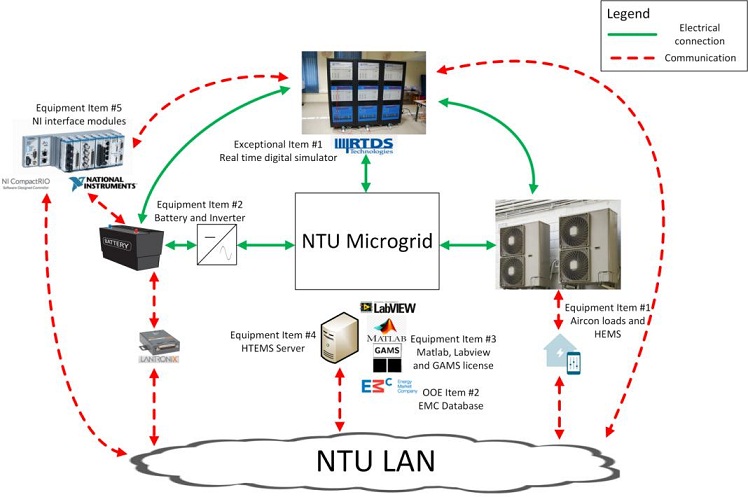 |
| Introduction |
|---|
Existing energy management functions for distribution systems are computational-intensive and increasingly complex with every new component added into the system. This project, which is a collaboration between the Nanyang Technological University (NTU) and its industry partner DNV GL, aims at developing a light-weight, scalable hierarchical transactive energy management system that balances three sets of inputs: Supply (e.g. solar intermittency), demand-side (e.g. variable loads) and market price fluctuations. It includes an advanced Model Predictive Control (MPC)-based controller for coordinating multiple controllable loads and intermittent energy sources and an assessment tool to facilitate participation of loads in demand response market. |
The proposed hierarchical transactive energy management system will improve coordination and control of intermittent distributed energy resources, and end-user energy efficiency. Such a responsive system will be piloted at the NTU campus. If successful, it could be plugged into current market applications (e.g. demand response and interruptible load bidding). |

|